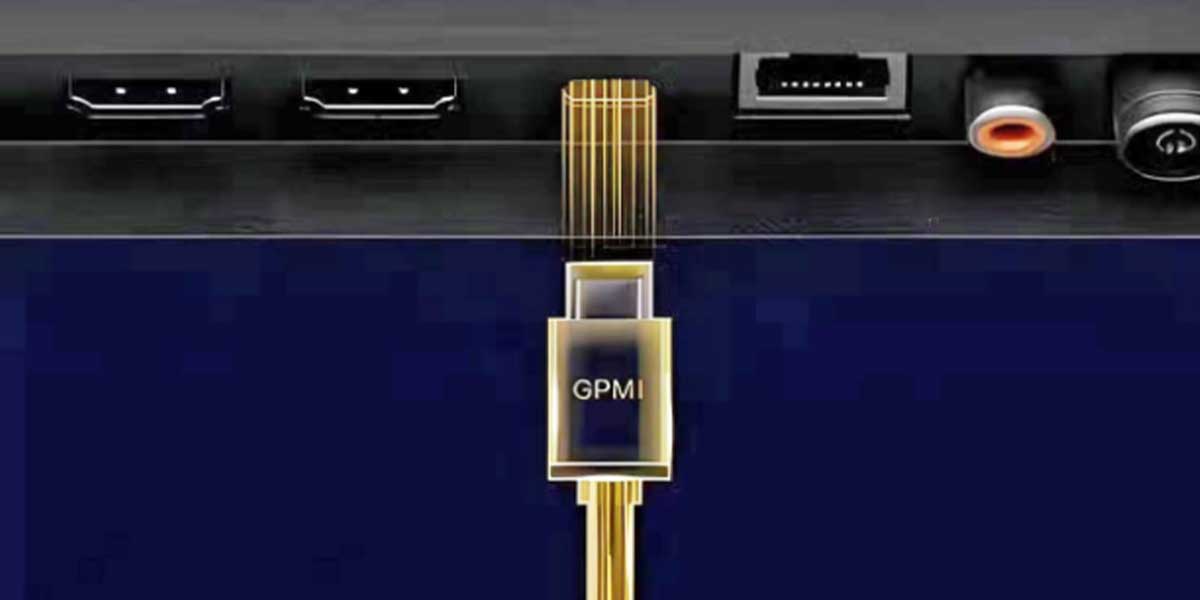GPMI: A Single Cable to Rule Them All?

The industry wasn’t exactly asking for another wired cable standard.
We already have HDMI 2.1 and 2.2, DisplayPort 2.1, USB4, and Thunderbolt 4 and 5 — and most of us have our favorites, along with a few scapegoats. Each standard is busy working on its next version, promising faster speeds and better performance.
Still, a new wired cable standard is gathering momentum — and by strategic design, it aims to conquer different industry segments in different waves.
Meet the General Purpose Media Interface, or GPMI.
Like USB4 or Thunderbolt 5, GPMI is bidirectional and combines data and power delivery into a single cable. It integrates data transmission, network connection, device control and high-power delivery all at once. Built to meet the needs of high-bandwidth digital audio and video — targeting 8K and beyond — GPMI is twice as fast as today’s standards without demanding more power.
And, unlike its predecessors, it’s free of the dreaded license fees.
Launching a new standard is never easy. Many companies argue there are already too many competing standards, and adding another would only increase production costs, marketing headaches and confusion (which is never good for sales).
But GPMI is backed by serious firepower: the Shenzhen 8K Ultra HD Video Industry Collaboration Alliance (SUCA), made up of more than 50 Chinese manufacturers. Key players include China Mobile, Sharp, Unilumin, Leyard, Huawei, Hisense, TCL, Skyworth, Hikvision and HiSilicon. Shenzhen, after all, is often called the home of consumer electronics in China.
GPMI comes in two flavors — Type-B, with a proprietary connector, and Type-C, which is compatible with the USB-C standard.

Simon Forrest, principal technology consultant at FutureSource Consulting, explains:
“GPMI Type-B uses a proprietary connector, providing a maximum bandwidth of 192Gbps and power delivery of up to 480W. This is more than sufficient to power high-performance laptops and even desktop computers, simplifying desk configuration since you can use one cable for both power and data between devices.
“The second, GPMI Type-C, uses the same connection as USB-C. GPMI Type-C provides for half the bandwidth and power of Type-B, delivering 96Gbps and a maximum of 240W. The data rate more than doubles the 40Gbps limit of USB4 and Thunderbolt 4, allowing transmission of 8Kp120 video alongside data and, perhaps more importantly, even future immersive entertainment formats over the interface. However, GPMI Type-C has the same power limit as the existing USB-C connector using the Extended Power Range (EPR) standard, so this won’t be perceived as an advantage”
Forrest notes that 8K content itself is still struggling to gain traction across broadcast and entertainment. “We’re looking towards new forms of immersive content, such as XR and 360 video, to really take advantage, or new industries such as automotive and transportation, which may capture, transfer and process vast amounts of real-time data in vehicles,” he said.
“It’s clearly early days regarding whether companies are likely to adopt a new interface – probably the PC and monitor vendors initially – however, the move by GPMI to utilise the USB-C form-factor perhaps makes it more likely to be of interest within the consumer electronics industry, given the physical and electrical characteristics already in place.”

Another well-known industry voice, Bob Raikes, editor at the 8K Association, weighs in:
“At the recent NAB show, the 8K Association demonstrated 8K 120Hz live game playing (possibly a world first!) using just HDMI 2.1b with DSC technology. That’s already a step further than any products in the market and HDMI 2.2 is on the horizon to boost that further. For that reason, it is not yet clear that there is a need for a new interface when HDMI is so well understood and accepted in the marketplace.”
Of course, the elephant in the room is why GPMI was created.
Sure, there’s a desire for a future-facing, single-cable standard. But there’s also a very strategic goal: reducing China’s reliance on Western-controlled technologies — and their associated licensing fees. By promoting domestic standards like GPMI, China hopes to foster greater technological self-sufficiency.
That gives GPMI a solid chance of dominating within China — but it also raises questions about its global prospects.

Paul Gray, founder of Graypixel Limited and a longtime analyst in TV, broadcast and Ultra-HD technologies, voices some skepticism about broad consumer adoption:
“My first reaction is that this is a bit of a solution in search of a problem. I am a skeptic of 8K simply because the economics don’t add up and few people will pay (or be able to perceive) the difference. (And of course the starting point is a 100″-ish screen which not everyone wants or has space)
“Secondly, the lesson of the past decade is streaming; this means a decline of TV peripherals (disc players, STBs etc) so that the need for external connectivity is falling. I expect that any native 8K sources would decode inside the TV.”
However, Gray sees more promise for GPMI beyond home entertainment:
“There are plenty of other display applications, such as video walls, signage and architectural use of displays / LED arrays. These appear to me to be where it has most potential. At the same time, such displays consume more power (typically because they are very large) so the onboard power part doesn’t look necessary. I suspect that the USB-C alt-modes are most likely to be of interest.”
GPMI is pitching some clear advantages for large-scale splicing screen systems:
- A self-developed chip to support multi-device collaboration.
- Bidirectional multi-flow data interaction between screens for greater stability and reliability.
- A single cable for both power and signal to simplify wiring and reduce installation costs.
- Low-latency transmission to optimize real-time performance.
The GPMI standard represents an ambitious push by a consortium of Chinese tech giants to create a next-generation, unified connectivity standard that leapfrogs current technologies in bandwidth and power delivery.
Within China, success seems plausible — an already growing ecosystem includes manufacturers, universities, enterprises and research institutes.
Global adoption? That’s a tougher road — and it will depend not just on technical specs but on geopolitics, existing market inertia and whether industries are really ready for yet another cable standard.
Key GPMI Specifications and Variants:
- GPMI Type-B: Proprietary connector, 192 Gbps bandwidth, up to 480W power delivery.
- GPMI Type-C: USB-C connector, 96 Gbps bandwidth, up to 240W power delivery.
Comparison to Existing Standards:
- Bandwidth: GPMI Type-C (96 Gbps) exceeds HDMI 2.1 (48 Gbps) and DisplayPort 2.1 (80 Gbps UHBR20). GPMI Type-B (192 Gbps) outpaces all current mainstream AV or data standards.
- Power Delivery: GPMI significantly surpasses traditional HDMI and DisplayPort (which offer little to no power delivery). It matches or exceeds USB-C and Thunderbolt standards.
- Features: Bidirectional data, networking, device control (similar to HDMI CEC) and a proprietary Chinese-developed content protection protocol called ADCP (claimed to be faster than HDCP).
For more information:




